目录
5 60 本教材点评
5.10 拓扑学 5 本
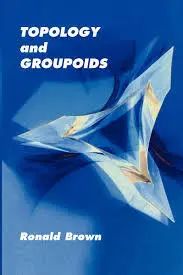
《Topology and Groupoids》
作者:Ronald·Brown
出版商:BookSurge
出版年:2006
ISBN:9781419627224
适用范围:高年级本科生,研究生
推荐强度:8
作者简介:Ronald·Brown(英国数学家,现为英国班戈大学计算机系荣誉教授,于牛津大学取得数学博士学位,威尔士博学学会会员,之前一直是纯数教授。其研究领域为拓扑、代数以及数学物理学,担任诸多数学杂志与期刊编委)
书评:
Why groupoids? Well, first one should ask, what are groupoids? After all, these things are not found in the standard graduate school curriculum and are not part of most research mathematicians’ tool kits. (If Ronald Brown, the author of the book under review, has it right, however, this may very well change in the not too distant future; in fact we’re long overdue for it.)
Well, what are they? First of all, they exhibit a fundamentally geometric or perhaps even categorical aspect in that the attendant binary operation (as befits anything “groupie,” so to speak) requires for the product AB to defined that the initial point of the arrow representing A coincide with the terminal point of the arrow representing B. Says Brown on p.xx of his book: “This corresponds to the composition of journeys.” And he goes on: “Conversely, the analysis of a journey through various places requires precisely this notion of partial composition.” And then: “The theory of groupoids has added to group theory a spatial component, coming from the geography of the places we visit in a journey. For this reason, groupoids can model more of the geometry than groups alone.”
Surely, this is a marvelous and potentially hugely useful thing, and even the preliminary description given above suggests that groupoids should occur quite naturally in the formulations of certain concepts in, e.g., algebraic geometry, category theory, and — most emphatically — algebraic topology. Certainly, the image of gluing arrows brings to mind some of Grothendieck’s slang concerning composing morphisms, even rising to the level of the “graphical” characterization of the derived category of a given abelian category (see, e.g., Gelfand-Manin, Homological Algebra). It is indeed telling, in this context, that Brown closes the aforementioned Preface with the following passage: “I also thank Alexander Grothendieck for an exuberant correspondence in the years 1982–1991: he described this as ‘a baton rompu,’ which roughly means ‘ranging over this and that,’ and indeed it dealt with many matters of mathematics and life.”
Furthermore, at the end of the book, in the final chapter entitled “Conclusion,” Brown returns to Grothendieck in connection with the pedagogical matter of how to elaborate new concepts in the context of mathematical progress, quoting the latter as referring (loc. cit.) to the “difficulty of bringing new concepts out of the dark.” Brown then goes on to mention Grothendieck’s famous metaphor of the rising sea for a means whereby to solve a mathematical problem: “…not like cracking a nut with a hammer, but more like gradually softening the shell with water till it can be peeled away…” (I believe that in Récoltes et Sémailles Grothendieck elaborates the corresponding metaphor of the rising sea eventually to submerge the island representing a given mathematical difficulty, flooding it, as it were, with enough structural machinery to make it appear as a triviality.)
Thus, the style of this book is perhaps somewhat against the grain, in ways Grothendieck would approve of. I think this is fitting in light of the fact that Brown is truly concerned with proselytizing what he believes to be an important new wave in mathematics.
But it turns out that this new wave has been building for quite a while, and it has already begun to sweep a number of scholars along with it in its orbit. Outside of (algebraic) topology, Alain Connes has seen fit to include it in his program of non-commutative geometry (Brown, p. 411), and K. MacKenzie published a book in 2005 titled, Lie Groupoids and Lie Algebroids in Differential Geometry, which reminds me that I in fact heard the word “algebroid” for the first time over twenty years ago, in graduate school, spoken by my algebraist office-mate.
This all fits, then, with the fact that groupoids’ first ripples go back to (at least?) the 1960’s, and this takes us to Ronald Brown’s own early work in this area, in the setting of algebraic topology, work which presently blossomed into a ramified scholarship theme stretching over the next four decades. Topology and Groupoids is in point of fact the third phase of an ongoing project, in that its first edition was published by McGraw-Hill already in 1968 as Elements of Modern Topology and its second edition appeared in 1988 as Topology: A Geometric Account of General Topology, Homotopy Types, and the Fundamental Groupoid, published by Ellis Horwood, Ltd. Even as the present third edition is an updated expansion of the second, the former title is particularly descriptive of what Brown has in mind in this project. The focus really falls on the fundamental groupoid “as a necessary and convenient generalization of … the fundamental group.” (p. xii) Additionally, and connected to the preceding, Brown observes that “[t]he exposition given here lends credence to the view that groupoids form a natural context for discussing … the relation between local and global phenomena.” (loc. cit.) Indeed, “[i]t thus seems that the notion of groupoid gives a more flexible and powerful approach to the notion of symmetry.” In this connection, see also the article by Alan Weinstein (at Berkeley), “Groupoids: Unifying Internal and External Symmetry,” arXiv. Math. RT/9602220 (23 January, 1996).
Certainly, therefore, what Brown is doing in Topology and Groupoids is at worst worthwhile and more than likely very important . It is appropriate that Brown assumes a particular pedagogical posture in bringing his message out: even as this book is full of material that would be novel to most of us, even topologists, at least as far as methodology is concerned, the intended audience is far broader than specialists and seasoned researchers. Brown seeks to bring this new way of doing things to beginners in the field, too, and this manifestly accounts for the breadth of his coverage of algebraic and geometric topology in the book’s 500+ pages.
Specifically, Brown’s first five chapters are true topological background material, stretching as they do from the topology of the real line to a discussion of projective (“and other”) spaces. It is only in the sixth chapter (p. 201 ff.) that we get to the all-important fundamental groupoid, but thereafter things get off the ground very swiftly: homotopy theory, cofibrations, computing fundamental groupoids (Van Kampen, the Jordan Curve Theorem revisited), covering spaces, orbit spaces, and, indeed, orbit groupoids. A broad palette.
I do believe in the general efficacy of the general categorical approach in mathematics (even if Grothendieck himself was occasionally heard to use the phrase “abstract nonsense”), and I find Brown’s philosophy both attractive and convincing. To wit (p. xx): “In mathematics, and in many areas, analogies are not between objects themselves, but between the relations between these objects. We will define many constructions by their relations to all other objects of the same type — this is called a ‘universal property’ … All this is the essence of the ‘categorical approach,’… a major unifying force in the mathematics of the twentieth century.”
Two final observations. The back cover of Topology and Groupoids displays a Venn diagram suggesting that, to borrow another word from Grothendieck, the yoga of groupoids should be amenable eventually to include, or engulf, such objects as groups, group actions, bundles of groups (!), and even sets and equivalence relations. This in itself is a very exciting prospect, alone worth the price of admission.
And this brings me to the second point: Topology and Groupoids is published by Ronald Brown himself via BookSurge. (See Brown's web site for the book at http://www.bangor.ac.uk/r.brown/topgpds.html ; there is also an e-book version.) So buying the book would be a direct contribution to his cause. I think it is an eminently proper cause, entirely worthy of support. The book is well written, indeed it is really a monograph composed by an insider and an expert; it is very serious mathematics presented in a sound pedagogical style: it is a very readable book equipped with fine examples and many exercises; and its impact should be felt beyond the confines of topology, even as topologists should be attracted to this material most strongly.
Topology and Groupoids is an impressive work which should be given a wide circulation.
书评:
为什么要讲广群?呵呵,或许我们应该要先了解什么是广群。毕竟,这在标准数学中课程中是找不到的,并且也并非是大多数学研究领域的工具。首先,它从根本上讲是几何层面的一种分类,即二进制运算中伴随乘积AB定义代表A的箭头的初始点与代表B的箭头的终点。布朗在其书中页就说了:“这与旅程的组成相对应。”,以及后面的“相反,对穿越各地的旅程进行分析时,恰恰需要这种部分构成的概念。”和“广群理论在分组理论中增加了空间成分,它来自我们旅途中所到之处的地理位置。因此,与单独的分类相比,广群可以建模更多的几何图形。”
提出这个概念是一件了不起的事情,并且可能会非常的有用,甚至以上给出的初步说明也表明,类群应该在某些概念的公式中自然而然地出现。例如,代数几何,范畴论以及代数拓扑中,有诸多这样的现象。当然,胶合箭头的图像使我想到了格洛腾迪克的一些关于构词的想法,甚至上升阿贝尔学说中的“图形”表征水平(参见Gelfand-Manin,《同源代数》)。布朗在书中的序言部分也对此表示致敬:“我还要感谢亚历山大·格洛腾迪克(Alexander Grothendieck)在1982年至1991年间的论著:他形容广群的几何概念是一条‘指挥棒’,意味着‘涉及到从这个到那个点的运动’,这的确出现在数学和生活的诸多方面。”但是这本书的风格却与格洛腾迪克所认可的方式背道而驰,我认为这很符合作者本人的风格,因为布朗总是把他认为的数学新潮流宗教化。事实证明,这股新潮已经兴盛了一段时间,并且已经开始席卷众多学者。比如 MacKenzie在2005年出版了一本书,题为《微分几何中的李群和李代数》,就是对这股新潮的一个呼应。这使我想起二十多年前,我在读研究生第一次听到“李代数”一词的场景。
有关广群的工作至少可以追溯到上世纪60年代,布朗在该领域的早期工作,即代数拓扑的设置,该工作现已蓬勃发展。拓扑和广群仍然是正在进行中的研究项目,其第一版已经由McGraw-Hill于1968年出版,当时名叫《现代拓扑的元素》,第二版于1988年作为《拓扑:一般的几何学》出版。第三版则是由BookSurge发行的《拓扑学和广群》,即本书。布朗指出:“这里给出的论述有力地证明了广群构成了局部现象与全局现象之间关系的自然环境。”“广群的概念似乎为对称性概念提供了一种更加灵活和强大的方法。”关于这一点,另请参阅arXiv上的Alan Weinstein的文章“广群:统一内部和外部对称性”。
布朗在传达信息时采取特殊的教学立场是适当的,即使本书充满了对我们大多数人甚至拓扑学家都是新颖的材料,但至少就方法论而言,目标受众还是很远的,也适合高年级本科生和研究阅读。布朗也试图将这种新的做事方式带给该领域的初学者,这显然可以解释他在这本500余页的书中所涉及的代数和几何拓扑广度。
具体来说,布朗的前五章是拓扑背景材料,从真实线条的拓扑结构讨论到投影空间,进行了延伸。在第六章(第201页及以后)中,我们才了解最重要的基本组群,之后则是迅速进入了新的领域:同伦理论、共纤化、计算基本组群(范·坎彭,约旦曲线)、涵盖空间、轨道空间以及轨道群,让人眼花缭乱。我发现布朗的哲学既有吸引力又令人信服。打个比方,在书中有这么一句话“在数学和许多领域中,类比不是对象之间的相似性,而是这些对象之间的关系之间的相似性。我们将通过它们与相同类型的所有其他对象的关系来定义许多构造,这被称为通用属性。这是分类方法的本质,是二十世纪数学的主要统一力量。”
总而言之,这本书写得很好,是该领域专家的学术精华。这是一种非常严肃的数学,但也以一种合理的教学方式呈现,因为它非常易读,并配有精美的例子和练习题。即使是拓扑学家也会被本书这种材料所吸引,也会感觉到它的影响实际上已经超出了拓扑结构的范围。
拓扑和广群是一项令人印象深刻的工作,应广泛传播。
点评人:Michael Berg(美国洛约拉马利蒙特大学数学系教授)
资料整理和翻译:冯远航
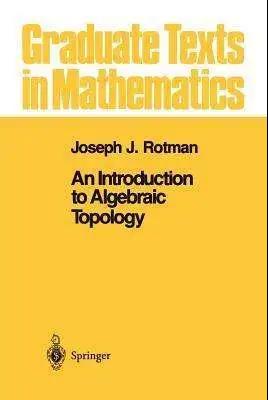
《Homology Theory: An Introduction to Algebraic Topology》
作者:Jim·Vick
出版商:Springer
出版年:1994
ISBN:9780387941264
适用范围:高年级本科生,研究生
推荐强度:9
作者简介: Jim·Vick(美国数学家,德克萨斯大学奥斯汀分校数学系教授,于2013年退休。Vick教授在弗里吉亚大学获得博士学位,从事教学研究工作长达42年,曾任德克萨斯大学奥斯汀分校副教务长、退管会主任,其主要研究领域为代数拓扑。)
书评:
I've studied and refreshed my understanding of algebraic topology from lots of books over the years, and I always come back to this one. It's the best of the lot by far, for me -- easy to read, beautifully geometrically motivated, and displaying as light a touch as possible with algebraic and categorical details (which are introduced in digestible pieces as the need for them arises). I'd say that anyone with a good facility for basic group theory, even with a quite minimal background in point-set topology, can come to understand homology theory quite easily by following this book.
I love the fact that Vick takes the reader straight into the thick of things, quickly getting to computations of homology groups of spheres and deducing a slew of nice geometric theorems from them (invariance of dimension, invariance of domain, Brouwer's fixed point theorem, the hairy ball theorem, the Jordan separation theorem, etc.) -- and that he doesn't waste any time with the tedium of simplicial complexes, the simplicial approximation theorem, and all that. It has always seemed perverse to me that beginning books tend to start with the simplicial theory; true, it's conceptually very basic, but its technical details are very easy to get bogged down in. Vick begins with singular homology, which is far easier to set up on a technical level than its simplicial cousin. After a number of very worthwhile deductions from the singular theory, he introduces CW complexes and shows that their homology is the same as that obtained from the singular theory. His treatments of products and Poincare duality are also outstanding.
The best thing about this book is that it's genuinely accessible to the beginning graduate student. You don't need to have had a course in category theory to read and understand this book. (In fact, seeing some things in a concrete setting here, like direct limits, will undoubtedly help people understand their more abstract categorical versions later on in graduate school). I will make one criticism of this book's way into homology theory, and that is that Vick neglects to prove Hurewicz's result that the first homology group of a path-connected space is the abelianization of the fundamental group. Although this result is nowhere needed in the book, to me it's really essential for understanding the geometric content of the integer coefficient of a given singular n-simplex within a given n-chain, at least in the easily visualized case n = 1. (It also helps in solving one of the exercises in this book, where one has to construct a map from the n-sphere to itself with any given integer as its degree; once you understand the Hurewicz result, it's easy to find such a map on the circle in the complex plane, and then repeatedly iterate the suspension operator to increase the dimension of the sphere.)
Apart from this detail, I love everything about this book. There are some typos, but that's true in most books, and they didn't bother me that much. I recommend this book to any novice student of algebraic topology, and especially to any who feel that their background in abstract algebraic machinery (category theory, homological algebra) is somewhat lacking. You'll learn it well from this book. Enjoy it.
回顾做数学研究的这些年来,我读了很多书,从有到无刷新了对代数拓扑的理解,但是我总是会回到这一本书。对于我而言,这是迄今为止最好的、最易于阅读,配图最精美的代数拓扑用书。我想说任何人不需要在点集拓扑方面懂太多,只要具备基本群理论的基础知识,都可以通过阅读本书轻轻松松地理解同调理论。
我喜欢维克先生将读者直接带入领域研究深处的作风,一开始就讲解球体的同调性组的计算,并从中推导出一系列不错的几何定理(尺寸不变性,领域不变性,Brouwer不动点定理,毛球定理,约旦分离定理等),并且他不会浪费任何时间来处理简单的单纯复数,简单的近似定理等,体现出详略得当、难易平衡的风格。在我看来,讲这方面的书往往始于简单理论,这是一种错误的做法。因为它在概念上非常基础,但是又很容易陷入技术细节,所以反而难进行快速入门。而维克的这本书从奇异的同调性开始,在同一水平上它比简单的定义更容易建立。在从奇异理论进行了许多非常有价值的推论之后,他介绍了CW络合物,并表明它们的同调性与从奇异理论获得的同调性相同。
关于这本书的最大优点是,初学者可以真正使用它,无需学习专门的理论课程即可阅读和理解本书。(实际上,本科生通过阅读本书学习到的一些具体情形,无疑将帮助他稍后在研究生时了解其更抽象的分类版本)。当然我认为本书也存在一些缺点,那就是维克(Vick)忽略了Hurewicz理论的证明,即路径连接空间的第一个同调群是基本群的阿贝尔化。尽管在本书中并不需要此结果,但对我而言,了解给定n链中给定奇异n-单形的整数系数的几何内容非常重要,这也有助于解决本书中的一些练习。比如说,其中一个练习就是使用任何给定的整数作为度数,从n球体到其自身构造一个映射。一旦了解了Hurewicz的结果,就很容易找到这样的映射复平面中的圆,然后重复迭代悬浮算子以增加球的尺寸。
除了这个小小瑕疵外,我喜欢这本书的所有内容。书中有一些错别字,这是难免的,不过并没有影响我阅读。我向所有对代数拓扑学感兴趣的初学者都推荐这本书,特别推荐给那些缺乏抽象代数(范畴论,同调代数)背景的人。
好好享受这本书吧。
点评人:Joseph Bak(纽约市立大学数学系助理教授)
资料整理和翻译:冯远航
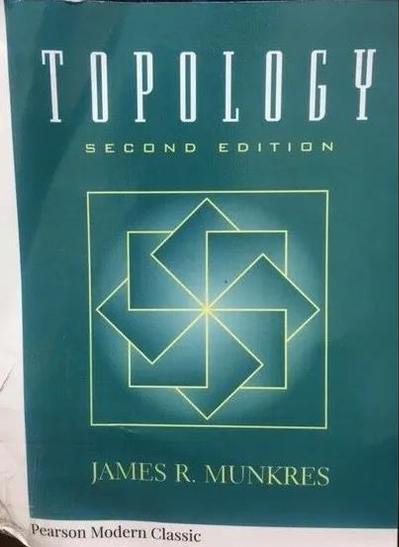
《Topology》
作者:James R. Munkres
出版商:Prentice Hall
出版年:2000
ISBN:9780131816299
适用范围:高年级本科生,研究生
推荐强度:10
作者简介: James R. Munkres(麻省理工学院数学系荣休教授,拓扑学专家,编写过诸多经典专著和数学教材。其于密歇根大学获数学博士学位,早年任教于普林斯顿大学,完善了匈牙利算法,并此后该算法被称为Kuhn–Munkres算法)
书评:
This venerable book has been around, in one form or another, for almost 40 years now. This is not a coincidence or an accident: Topology is an exceptional book, and, though I have some doubts as to its current suitability as an undergraduate text at an average institution, it certainly is a book that should be owned by anybody who teaches such a course or who has an interest in the material. It is a genuine classic.
The book was originally published in 1975 under the title Topology: A First Course, and was described in the preface as a text for topology at the senior or first-year graduate level. Of course, one had to bear in mind that the author taught at MIT, so what was suitable for undergraduates there might not be suitable for undergraduates at other places. The book covered point-set topology quite thoroughly, and also contained a brief introduction to algebraic topology in the form of the fundamental group. I have considerable fondness for this first edition, since, at just about that time, I was taking a graduate course in algebraic topology with a teacher who, shall we say, gave whole new meaning to the word “incomprehensible”; I purchased the book and thought it was the clearest introduction to the fundamental group that I could find in print.
Twenty-five years later, in 2000, the second (and current) edition appeared, this time titled simply Topology. This is a substantial revision, with a greatly expanded introduction to algebraic topology at the level of fundamental groups, covering spaces and surfaces; the deletion of the phrase “First Course” from the title undoubtedly reflects the fact that the book now contains enough material for both a first and second course. This division is explicitly reflected in the text, which is divided into two parts, “General Topology” and “Algebraic Topology”, containing eight and six chapters, respectively.
Part I on general topology opens with a chapter on set theory and logic that is much more detailed and comprehensive than one typically finds in books at this level. It is more than 70 pages long, and goes into some depth on things like the Axiom of Choice, Maximum Principle and well-ordering (the order topology is used throughout the book, later). The next chapter begins the subject of topology with the definition of a topological space. From a strictly pedagogical point of view I think there is some value in first discussing metric spaces in detail, thus motivating the next level of abstraction to topological spaces, but Munkres defers metric spaces until later in the chapter, where they appear as examples of topological spaces. This different point of view may reflect a fact that I alluded to in the first paragraph above, and which I’ll discuss in more detail below: what was suitable for undergraduates 40 years ago may not be suitable today.
The remaining chapters in part I of the text cover most of the standard topics in point-set topology (compactness, connectedness, separation axioms, normal spaces, Tychonoff’s theorem, Baire category), as well as a number of topics that might not be covered in an introductory course (e.g., Nagata-Smirnov metrization theorem, paracompactness, compact-open topology, dimension theory). Several additional topics (e.g., topological groups and nets) that are not covered in the main body of the text are developed through a sequence of supplementary exercises.
Part II of the book is a beautiful introduction to algebraic topology. Topics covered here are the fundamental group, covering spaces, and the classification of surfaces (including a brief look at the first homology group, defined as the abelianization of the fundamental group rather than the usual way). Along the way we encounter, for example, a proof of the Fundamental Theorem of Algebra using the fact that the fundamental group of a circle is infinite cyclic, and also the Borsuk-Ulam theorem. There are also chapters on the Seifert-van Kampen theorem, the Jordan curve theorem and other separation theorems in the plane, and a theorem in group theory (that every subgroup of a free group is free) that can be strikingly proved via algebraic topology.
This part of the text is comparable, in both content and level of difficulty, to Massey’s excellent Algebraic Topology: An Introduction, though of course Munkres also has the advantage of also containing a lot of general topology material in part I, thereby making this book more suitable for instructors offering a two-semester course combining both areas. Massey’s book is clearly intended for a graduate-student audience (it appears in Springer’s Graduate Texts in Mathematics series) and so, I think, is Part II of Munkres; this is material that is just not covered very much at the undergraduate level.
Of course, many universities do offer undergraduate point-set topology courses; is this book suitable for one of those? While this text is certainly being used at undergraduate institutions across the country, I would have some trepidation about using it for our undergraduate course at Iowa State. This is a text that (in Part I as well as in Part II) both requires and rewards serious reading by a well-motivated student. Explanations are clear, but concise, and there is not a lot of hand-holding. I have already pointed out, for example, that the definition of “topological space” comes without much in the way of prior motivation; this is typical of the no-nonsense, direct approach to the subject that characterizes the text. The writing is elegant and the student is provided everything he or she needs to learn the material well — there are lots of pictures, and many exercises (some relatively easy, but quite a few somewhat challenging) — but the student is expected to put in some hard work reading the book. The very best students in the class could probably get a lot out of reading it, but the more average students might find it daunting and discouraging.
I would say, by way of rough analogy, that this book is to undergraduate topology what Rudin’s Principles of Mathematical Analysis (aka “Baby Rudin”) is to undergraduate analysis: I used Rudin as a college student, loved it, and learned a tremendous amount from it, but if I used it as a text for the undergraduate analysis course here at Iowa State, the results would not be pretty.
Having said this, I hasten to point out that I would not want to see a new, dumbed-down, edition published of either Rudin or Munkres. The originals have a kind of elegance and nostalgic charm to them, a reminder of what college mathematics courses were once like. Even if its use as a text might be problematic, this book is still the one I look at first when I have a question about point-set topology. I see that the Basic Library List Committee has given this book three stars, meaning that the Committee views it as essential for undergraduate libraries; I couldn’t agree more.
《拓扑学》这本“古老”的书以各种各样的形式已经存在了将近40年了,它是一本比较特殊的作品。尽管我对它目前在普通大学中作为本科教材的适用性存有疑问,但我能肯定它是一本好书。任何一个对拓扑感兴趣的人都值得拥有它,这是真正的经典。
该书最初于1975年出版,标题为“拓扑:第一门课程”,并在序言中描述为高年级本科生或一年级研究生的拓扑教材。当然,我们须知作者是在麻省理工学院的教授,所以适合当时那批大学生的东西可能不适合普通大学的学生。该书非常全面地介绍了拓扑学的基础内容,并以简明扼要的形式介绍了代数拓扑。我对第一版非常喜欢,因为在当时,我正在和一位老师一起学习代数拓扑的研究生课程。可以说,这本书给予了我许多启迪,它的难度也让我吃了不少苦头。我当时就购买了这本书的第一版,也是当时我认为在出版物中能找到的最好版本。
25年后的2000年,第二版(最新版)问世,即本书。这次修订从原来比较长的书名改成了拓扑学这三个字,但是内容反而有了实质性的扩充。本书在基本组的层次上覆盖了空间和表面,大大扩展了对代数拓扑的介绍。标题中删除“第一门课程”一词无疑反映了一个事实,即该书现在包含了更具有完整性的拓扑学内容。这种区分在书中有明确体现,大标题即分为两部分:“一般拓扑”和“代数拓扑”,分别包含八章和六章。
现在许多大学都提供本科生的拓扑课程,那么读者可能会问,这本书适合作为教科书之一吗?尽管本书肯定会在全国各地的大学机构中使用,但我觉得在爱荷华州一些大学的本科课程中使用它还是有些勉强了,这本教科书还是更适合真正学有余力的精英大学生使用。这本书的文本阐述非常清楚,但很简洁,没有太多帮助读者理解内容的辅助性讲解,所以啃起来颇有难度。但这种简洁的写作风格无疑是优美的,提供了所需的一切学习材料,同时有很多图片和许多练习(有些相对容易,但有些颇具挑战性),但总体的难度还是偏大。一个班上最好的学生可能会从阅读中学到很多东西,但是普通学生会发现它令人生畏。
话虽如此,但我并不想看到James Munkres针对本科生的教学实用性而去推出一些删减过后的简易版本,那样就失去了原作的精髓。原始作品给人一种优雅和怀旧的魅力,使人想起大学数学课程曾经是什么样子,具有作为学术经典的价值。总而言之,将本书其用作教科书可能会有问题,但当我对拓扑有相关疑问时,这本书仍然是我的首选。我看到图书馆清单委员会给这本书打了三颗星,这意味着委员会认为本书对本科生至关重要,这点我完全同意。
点评人:Mark Hunacek(爱荷华州立大学数学系讲师)
资料整理和翻译:冯远航
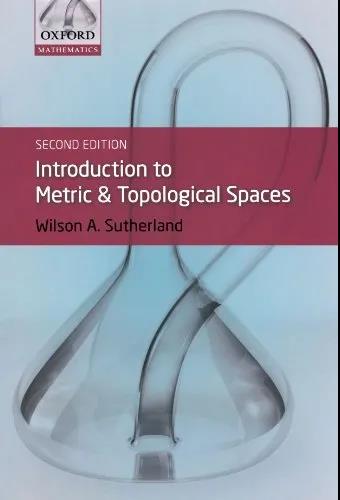
《 Introduction to Metric and Topological Spaces》
作者:Wilson A. Sutherland
出版商:Oxford University Press
出版年:2009
ISBN:9780199563081
适用范围:高年级本科生
推荐强度:9
作者简介:Wilson A. Sutherland(1935-2019,英国数学家,多年来一直任教于牛津大学,同时担任耶鲁大学和阿伯丁大学的客座教授。其主要研究领域为拓扑空间,留有多本数学专著和重要论文)
书评:
This is a brief, clearly-written introduction to point-set topology. The approach is axiomatic and abstract — the development is motivated by a desire to generalize properties of the real numbers rather than a need to solve problems from other areas of mathematics. In particular there is very little mention of function spaces, although some of the examples deal with the existence of solutions to integral and differential equations as an application of Banach’s fixed-point theorem.
The book assumes some familiarity with the topological properties of the real line, in particular convergence and completeness. The level of abstraction moves up and down through the book, where we start with some real-number property and think of how to generalize it to metric spaces and sometimes further to general topological spaces. Most of the book deals with metric spaces.
The book has modest goals. It introduces the most important concepts of topology but does not take any of them very far. The exercises at the end of each chapter are partly routine applications of the chapter contents and partly extensions into more difficult areas not covered in the chapter. There is a companion web site that has solutions to all the exercises, as well as a great deal of supplemental material that did not fit into the main narrative. Because the book starts out with the real line, it is slanted somewhat towards analysis. Its aim is topology and it is not as nearly as thorough as analysis-oriented books such as Wilansky’s Topology for Analysis or Kelley’s General Topology. It also has an interesting chapter on quotient spaces, focused on Moebius strips and tori with various numbers of holes.
书评:
本书用简洁的语言清晰地介绍了点集拓扑学。它的研究方法是公理化和抽象的——这一学科发展的动机是希望推广实数的性质,而不是需要解决其他数学领域的问题。特别地,尽管一些例子作为Banach不动点定理的应用涉及积分方程和微分方程解的存在性,但本书还是很少提到函数空间。
本书假定读者对实轴的拓扑性质有一定的了解,特别是收敛性和完备性。在本书中,我们从实数的一些性质开始,思考如何将其推广到度量空间,有时进一步推广到一般拓扑空间。这本书的大部分内容都是关于度量空间的。
本书并不以教会读者点集拓扑学的每一细节为目标。它只是介绍了拓扑学中最重要的概念,但不会深入某一内容。章末习题中,部分对应本章正文,而部分则涉及正文未涵盖的知识。本书有配套的在线网页,提供了所有习题的答案与一些对正文内容的补充材料。因为这本书从实数开始,所以更像是分析学。本书的目标依然是介绍拓扑学,但并没有像Wilansky的Topology for Analysis或Kelley的General Topology等书籍完全从分析学的角度来阐述。它还有十分有趣的一章,是关于商空间的,关注Moebius带和具有不同数量洞的环面。
点评人:Allen Stenger(退休工程师,数学爱好者,美国数学学会会员)
资料整理:冯远航
翻译:赵旭彤
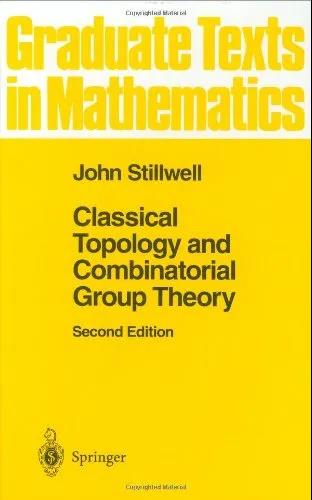
《 Classical Topology and Combinatorial Group Theory》
作者:John·Stillwell
出版商:Springer
出版年:1993
ISBN:9780387979700
适用范围:高年级本科生,研究生
推荐强度:9
作者简介:John·Stillwell(澳大利亚数学家,旧金山大学和莫纳什大学数学系教授。其在麻省理工学院获得数学博士学位,后从事教学工作多年,2005年获美国数学学会最佳论文Chauvenet奖,2012入选美国数学学会会员。)
书评:
It is very refreshing to see a mathematician lay down his personal philosophyabout his subject and its teaching. In the preface to this book the author gives hisviews with some force. In my opinion, a well-balanced introduction to topologyshould stress its intuitive geometric aspect ... and goes on to stress the historicalapproach in the book. This is not to claim that topology received its main impetusfrom geometric recreations like the seven bridges of Konigsberg; rather, it resultedfrom the visualization of problems from other parts of mathematics—complexanalysis (Riemann), mechanics (Poincare) and group theory (Dehn). It is theseconnections to other parts of mathematics which make topology an important aswell as a beautiful subject. Anyone contemplating giving a course on topologyshould certainly read this preface.
The author now commits his only real sin—he has a Chapter 0 on 'Introductionand foundations'. He makes the usual statement that readers are meant not to takeit too seriously, only to refer back to it if necessary. However, I am afraid that it willonly put students off—not that the subject matter is bad, it has many excellentfeatures—but it is fifty pages of rather tough material. It contains some standardmaterial on continuity, homeomorphisms and simplicial complexes, all wellexplained and motivated. It also has an account of the polygonal Jordan curvetheorem, an item sadly missing from most of the textbooks. This is followed bysections on algorithms and combinatorial group theory; the four pages onalgorithms are particularly welcomed—here is the first brief, clear account that thereviewer has come across.
The book now gets properly started. Chapter 1 is entitled 'Complex analysis andsurface topology'. This contains a well-motivated and clear account of theclassification of compact surfaces. There are plenty of beautiful and carefully drawnpictures and diagrams here and throughout the rest of the book. There are alsoplenty of interesting historical notes and comments. The author sometimes pointsout various technical points that he decided not to treat fully but he does motivatethem and he indicates the main points of the proof; an example in this chapter is thetopological invariance of the Euler characteristic.
Group theory makes an appearance in Chapter 2 on 'Graphs and free groups'. Itincludes the basic material on free groups as far as Schreier transversals.Elementary homotopy theory is the topic of the next chapter and it laysfoundations for the detailed study of the fundamental group in Chapter 4. Morestress is laid on the computational aspects than is often the case; the Wirtingerpresentation, the Fox-Artin wild arc, torus knots, lens spaces and the Kuroshsubgroup theorem are amongst the topics covered. Chapter 5 introduces homologyand relates it to the material that has been developed so far.
The next chapter starts with a study of closed curves on surfaces. Dehn'salgorithm for the solution of the word problem for the fundamental group of asurface is explained. The algorithm for deciding whether a closed curve on a surfaceis homotopic to a simple curve and Baer's theorem that homotopic simple curves areisotopic are both proved. The author sensibly restricts to the polygonal case. Thechapter ends with an account of the homeomorphism groups of surfaces and ofmapping class groups. The material of this chapter is not commonly found instandard texts and is particularly welcomed.The text concludes with two chapters on 'Knots and braids' and 'Threedimensional manifolds'. They treat a variety of topics in the style already firmlyestablished in the previous chapters.
This book is an excellent one. It is both scholarly and clear; it is a book fromwhich a student can first learn the basic material and yet there is enough depth andso many interesting titbits that he will want to come back to it time and time again.
When reading the book one gets the impression that the subject is exciting, that ithas been constantly developing and evolving since the beginning—the author evenincludes the occasional paragraph on how some results were not correctly provedinitially and how the mistakes were discovered and patched up. The author has gotout of the 'theorem, lemma, proof strait-jacket with excellent effect. In some waysthe book reminds me of the classic Geometry and the imagination of Hilbert andCohn-Vossen but it is more specialised and more of a textbook.
I can only hope that there will be many more books written on mathematics ofall kinds in the style laid down by John Stillwell.
书评:
看到一位数学家就他的学科及其教学阐述了他的个人哲学,真是令人耳目一新。在这本书的前言中,作者有力地阐述了自己的观点。在我看来,对拓扑学的全面介绍应该强调其直观的几何方面…并在书中强调历史上的研究方法。这并不是说拓扑学的主要动力来自几何创造,比如Konigsberg七桥问题;相反,它源于数学其他领域——复分析(Riemann)、力学(Poincare)与群论(Dehn)中问题的可视化。正是这些与数学其他领域的联系,使拓扑学成为一门重要而又美丽的学科。任何打算开设拓扑学课程的人都应该阅读这本书的前沿。
作者现在犯下了他唯一真正的罪——本书的第0章“介绍与基础”。他通常会说,读者不应该过于认真地阅读此章,需要时回头翻看即可。然而,我担心这只会让学生们感到不快,不是因为预备知识这种形式本身不好,而是本书的这一部分相当晦涩难懂。它包含了一些关于连续性、同胚和单纯复形的知识,还介绍了多边形Jordan曲线定理,这是大多数教材中不幸遗漏的一项。本章接下来介绍了算法和组合群论;关于算法的四页简洁明了,特别受读者欢迎。
这本书现在真正开始了。第1章“复分析与曲面拓扑”,清晰地说明了紧曲面的分类及其研究动机。在这本书的其余部分中,经过精心绘制的插图十分精美,还有很多有趣的历史注记与评论。作者有时会指出他决定不过于详细地讨论证明中的某一技术问题,但它也会大概给出前因后果与证明思路;一个例子是Euler特征数的拓扑不变性。
群论出现在第2章“图与自由群”中。它包括自由群的基本内容,直至Schreier断面。初等同伦论是下一章的主题,它为第4章中对基本群的详细研究奠定了基础;Wirtinger表示、Fox-Artin弧、圆环结、透镜空间和Kurosh子群定理等都被涵盖在内。第5章介绍了同源性,并将其与迄今为止已介绍的内容联系起来。
下一章首先研究曲面上的闭合曲线。阐述了Dehn算法在求解曲面基本群问题中的应用。证明了判定曲面上闭合曲线是否与简单曲线同伦的算法与Baer定理(同伦的简单曲线同痕)。作者在本章只讨论了多边形的情形。本章最后介绍了曲面的同胚群和映射类群。本章的内容在一般教材中并不常见,所以特别受到读者欢迎。正文部分以“结与纽带”和“三维流形”两章结束,它们延续了前几章的风格来处理各种各样的问题。
这本书很棒,严谨详尽又清晰易懂;它就是这样一本书,学生们先从中学到基本知识,但书中也有足够深入的问题和许多趣闻轶事,让他们想一次又一次地重温。
读者会被这一领域深深地吸引。拓扑学从一开始就不断发展和演变,作者甚至偶尔会写一段内容,阐述一些结论最初是如何没有得到正确证明的,以及错误是如何被发现和修补的。作者从“定理、引理、证明”三段式阐述中得到了很好的效果。在某种程度上,这本书让我想起了Hilbert和Cohn Vossen的Geometry and the imagination,但它更加深入,而且更像一本教材。
最后我希望会有更多的John Stillwell风格的数学教材出现。
点评人:Elmer Rees(1941-2019,海尔布隆数学研究所的创始主任(2005-2009),此后他在布里斯托大学担任名誉客座教授。)
资料整理:冯远航
翻译:赵旭彤
